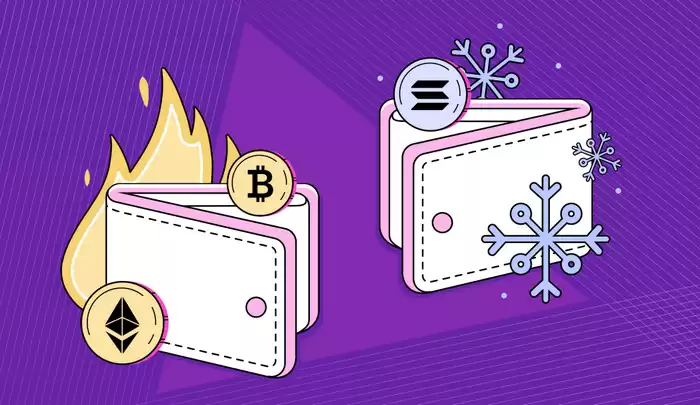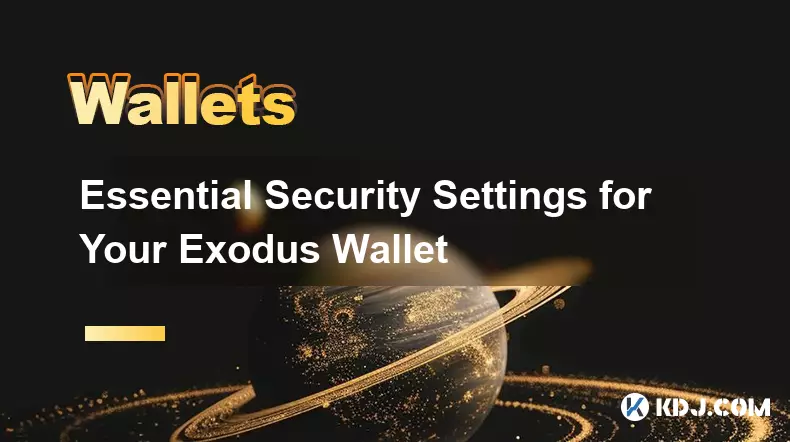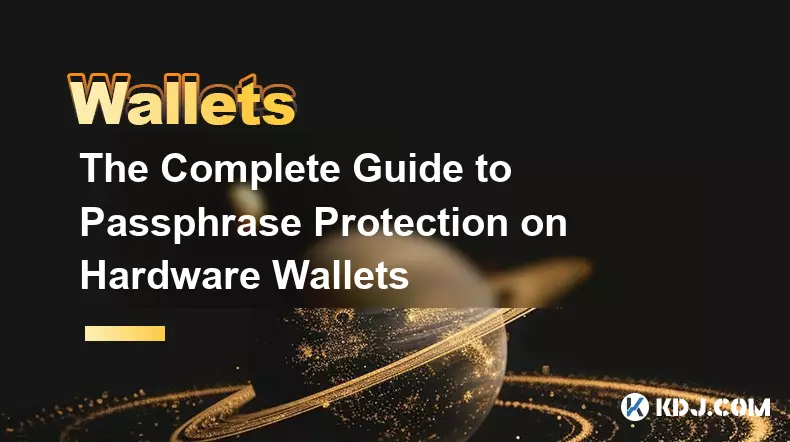-
 bitcoin
bitcoin $99177.955738 USD
-7.32% -
 ethereum
ethereum $3187.183061 USD
-12.38% -
 tether
tether $0.999809 USD
0.00% -
 xrp
xrp $2.117933 USD
-9.42% -
 bnb
bnb $906.710033 USD
-9.17% -
 solana
solana $149.367737 USD
-10.74% -
 usd-coin
usd-coin $0.999816 USD
0.01% -
 tron
tron $0.281498 USD
-0.38% -
 dogecoin
dogecoin $0.156292 USD
-8.00% -
 cardano
cardano $0.500744 USD
-10.19% -
 hyperliquid
hyperliquid $38.087358 USD
-4.58% -
 chainlink
chainlink $14.097831 USD
-8.54% -
 bitcoin-cash
bitcoin-cash $463.329916 USD
-9.22% -
 ethena-usde
ethena-usde $0.999078 USD
-0.01% -
 unus-sed-leo
unus-sed-leo $9.475862 USD
-0.79%
Can assets in a Web3 wallet be traded with leverage?
Leverage trading allows traders using Web3 wallets to magnify profits and losses on their crypto trades by borrowing capital beyond their initial investment.
Oct 22, 2024 at 04:17 am

Yes, it is possible to trade assets in a Web3 wallet with leverage. Leverage is a financial tool that allows traders to borrow an amount larger than their initial deposit to amplify potential profits (or losses) on their trades.
How to Trade Assets in a Web3 Wallet with Leverage:- Choose a Web3 Wallet That Supports Leverage Trading:
- Some popular Web3 wallets that enable leverage trading include MetaMask, Phantom, and Coinbase Wallet.
- Connect Your Web3 Wallet to a Decentralized Exchange (DEX):
- DEXs are platforms for trading cryptocurrencies without relying on a centralized authority. Many DEXs offer leverage trading options.
- Transfer Your Assets to the DEX:
- Send the cryptocurrencies you wish to trade with leverage from your Web3 wallet to the DEX.
- Enable Leverage in Your Trading Account:
- Locate the leverage settings within the DEX and select the desired leverage ratio. Common leverage ratios range from 2x to 100x, but higher leverage ratios come with increased risk.
- Place Your Trades:
- Once leverage has been enabled, you can place trades as usual. However, your positions will be amplified by the leverage ratio you have chosen.
- High Risk: Leverage trading involves significant risks and can amplify both profits and losses. It is crucial to understand the risks involved before engaging in leveraged trading.
- Collateral Requirement: DEXs may require you to deposit collateral in order to trade with leverage. The collateral is essentially used as a security against potential losses on leveraged trades.
- Liquidation: If the value of your collateral falls below a certain threshold (known as the liquidation price), the DEX will automatically close your leveraged positions to protect itself from losses.
- Hidden Fees: Some DEXs may charge additional fees for leveraging trades, such as maker or taker fees. It is essential to familiarize yourself with all fees before trading with leverage.
Trading assets in a Web3 wallet with leverage can be a powerful tool to amplify potential profits, but it also carries significant risks. Before engaging in leveraged trading, it is crucial to thoroughly understand the risks involved, ensure you have adequate collateral, and familiarize yourself with the fees and liquidation mechanisms of the DEX you are using.
Disclaimer:info@kdj.com
The information provided is not trading advice. kdj.com does not assume any responsibility for any investments made based on the information provided in this article. Cryptocurrencies are highly volatile and it is highly recommended that you invest with caution after thorough research!
If you believe that the content used on this website infringes your copyright, please contact us immediately (info@kdj.com) and we will delete it promptly.
- XRP ETF Race Heats Up: FTI Filing Sparks November Launch Buzz
- 2025-11-05 18:45:01
- Crypto's US Liquidity Crisis: Bitcoin's Wild Ride and What's Next
- 2025-11-05 19:00:02
- ICP Price Trendline Breakout: Eyes on $10 Upside Target?
- 2025-11-05 17:25:01
- Bitcoin Price Dive: Market Sell-Off and Crypto Rollercoaster
- 2025-11-05 17:25:01
- Bitcoin's Bearish Blues: Analysts Assess the Downturn
- 2025-11-05 17:30:01
- Momentum, Hype, Launch: Riding the Crypto Rollercoaster, NYC Style
- 2025-11-05 17:30:01
Related knowledge

Public vs. Private Keys: A Core Concept for Wallet Security
Nov 05,2025 at 03:18pm
Understanding Public and Private Keys in Cryptocurrency Wallets1. In the world of cryptocurrency, public and private keys form the foundation of walle...

Essential Security Settings for Your Exodus Wallet
Nov 05,2025 at 08:00am
Understanding Exodus Wallet Security Fundamentals1. Exodus is a software wallet that allows users to store, manage, and exchange various cryptocurrenc...

Reviewing Smart Contract Permissions: A Critical Security Step
Nov 01,2025 at 04:55pm
Understanding Decentralized Exchanges in the Crypto Ecosystem1. Decentralized exchanges (DEXs) have reshaped how traders interact with digital assets ...

The Complete Guide to Passphrase Protection on Hardware Wallets
Nov 03,2025 at 10:37am
Understanding Passphrases in Hardware Wallets1. A passphrase, often referred to as a 25th word, adds an additional layer of security beyond the standa...

How to Safely Interact with dApps: A MetaMask Security Tutorial
Nov 04,2025 at 02:54am
Understanding dApp Interaction Risks1. Decentralized applications (dApps) operate on blockchain networks, enabling users to trade tokens, lend assets,...

A Step-by-Step Guide to Creating a Secure Paper Wallet
Nov 05,2025 at 04:39am
Understanding the Basics of a Paper Wallet1. A paper wallet is a physical document that contains the private and public keys of a cryptocurrency addre...

Public vs. Private Keys: A Core Concept for Wallet Security
Nov 05,2025 at 03:18pm
Understanding Public and Private Keys in Cryptocurrency Wallets1. In the world of cryptocurrency, public and private keys form the foundation of walle...

Essential Security Settings for Your Exodus Wallet
Nov 05,2025 at 08:00am
Understanding Exodus Wallet Security Fundamentals1. Exodus is a software wallet that allows users to store, manage, and exchange various cryptocurrenc...

Reviewing Smart Contract Permissions: A Critical Security Step
Nov 01,2025 at 04:55pm
Understanding Decentralized Exchanges in the Crypto Ecosystem1. Decentralized exchanges (DEXs) have reshaped how traders interact with digital assets ...

The Complete Guide to Passphrase Protection on Hardware Wallets
Nov 03,2025 at 10:37am
Understanding Passphrases in Hardware Wallets1. A passphrase, often referred to as a 25th word, adds an additional layer of security beyond the standa...

How to Safely Interact with dApps: A MetaMask Security Tutorial
Nov 04,2025 at 02:54am
Understanding dApp Interaction Risks1. Decentralized applications (dApps) operate on blockchain networks, enabling users to trade tokens, lend assets,...

A Step-by-Step Guide to Creating a Secure Paper Wallet
Nov 05,2025 at 04:39am
Understanding the Basics of a Paper Wallet1. A paper wallet is a physical document that contains the private and public keys of a cryptocurrency addre...
See all articles










































































